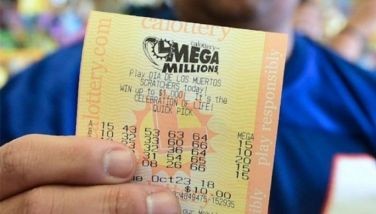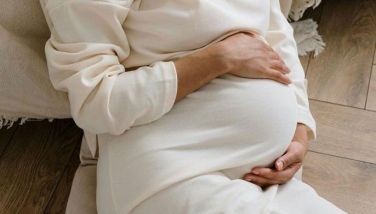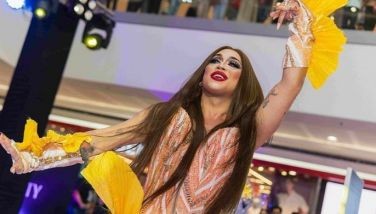Home again: Bahay Tsinoy reopens
Finally, after being shuttered by the pandemic, museums and theaters have re-opened, breathing renewed life into the cultural scene in the metropolis. The latest to re-open its doors is Bahay Tsinoy, museum of the Chinese in Philippine life, housed at the Kaisa Heritage Center (KHC) in historic Intramuros. First opened in January 1999, the Center at the corner of Anda and Cabildo streets houses not just the museum but also the Chinben See Memorial Library (with one of the most extensive collections of materials on Chinese overseas), the Awat Keng Auditorium, the Kaisa Research Center and the offices of Kaisa Para sa Kaunlaran (more on that later).
At the formal re-opening last National Heroes’ Day, Secretary of Foreign Affairs Enrique Manalo noted that “the Filipino-Chinese community plays an important role in our community as well as in our ties with China. … After all, at the end of the day, diplomacy is really about relations between and among peoples.” Also present at the ceremony was Chinese Ambassador Huang Xilian and members of the Chinese embassy in Manila.
The museum traces the role of the Chinese in the life of the nation, starting from pre-colonial times, when trade flourished (there is a replica of a galleon). The visit of Sultan Paduka Batara to Ming Emperor Yong Le in 1417 is well documented, including the visit to Sulu of his descendants in 2017. In the same pre-colonial section, don’t miss the photo showing the tinikling, performed by Chinese dancers in Yunnan province!
A replica of the 1734 Murillo Velarde map which details the country’s territory occupies pride of place. The map, bought at a Sotheby’s auction in 2014 by tech entrepreneur and educator Mel Velasco Velarde who donated it to the Philippine government, clearly shows Panacot Shoal and Los Bajos de Paraguas – today’s Bajo de Masinloc or Panatag Shoal and Spratly Islands, respectively – as part of our country’s territory. The first scientific map of the Philippines, drawn by Jesuit Father Pedro Murillo Velarde and published in Manila in 1734, is truly “every Filipino’s birthright.”
A walk-through takes visitors from pre-colonial to colonial times, the Parian quarters, Tsinoys who were part of our country’s struggle for freedom and independence fighting against the Spaniards, the Americans and the Japanese.
My favorite part of the museum has to be the Binondo diorama, because many of the landmarks were part of my growing up years. The family business was located on Dasmariñas street, and I spent many happy hours walking around the area with my mother and my ama (grandmother), buying foodstuff and condiments; chickens, ducks, pigeons, fish and crabs, all live and killed and cleaned on order. I loved the tea store my ama frequented (although once it was raided for issuing fake, under-priced receipts!), and the grocery stores where I could get my kiam-muy, butong pakwan and other treats.
The diorama tells the story of Binondo, the world’s oldest Chinatown, established in 1594 on a land grant by Governor General Luis Perez Dasmariñas for the Christianized Sangleys, separate from the unbaptized Chinese in the Parian. Thus many of the streets were named after saints – Sto. Cristo, Sta. Elena, San Fernando, Sacristia (now Ongpin); Benavidez was Manila’s first archbishop.
It started with the Binondo Church, founded in 1596, now the National Shrine of Saint Lorenzo Ruiz (born in Binondo to a Chinese father and Filipino mother). Next to it was the ornate building of La Insular Cigar and Cigarette Factory and the Hotel de Oriente, a crown jewel of the time. One of its distinguished guests was Jose Rizal, who stayed there (Room 22) in 1892 and mentioned it in his novel Noli Me Tangere (chapter 5).
Streets were named after businesses or trades found therein, like Anluague for carpenters and Jaboneros for soap makers.
Binondo boomed as a commercial center, with banks local and foreign setting up headquarters (the Hongkong and Shanghai Banking Corp. set up shop in 1875). The China Bank building, built in 1923, has been restored; it was the first privately-owned local commercial bank in the country. My parents opened a savings account for me where I would deposit the ang pao money my ama gave me at Christmas; I still maintain that account, although obviously I have had to update my signature.
SFA Manalo succinctly summed up Bahay Tsinoy’s unique role: “In order to preserve the peaceful and constructive relations between the Philippines and China, and the friendly and cooperative spirit between our nations and peoples, looking back at our past and studying how our communities evolved through the centuries-old interactions between our peoples should inspire us to continue advocating for peace and cooperation, to preserve these gains and these unique cultural influences that define Philippine society.”
* * *
In the fearful early months of the pandemic, the KHC was, unlike the rest of the country, a beehive of activity. While the public areas were closed, the center served as warehouse and repacking facility of COVID-related materials – face masks and shields, protective clothing, alcohol, medicines, even ventilators and nebulizers. Donated by individuals, NGOs and even governments from here and abroad, all of these were deposited at the KHC, portioned and repacked by staff and volunteers from the Philippine Navy and Marines, then sent out to hospitals and health centers all over the country.
Over its 36 years of existence, Kaisa Para Sa Kaunlaran has established a solid reputation as a socio-civic organization run on two things – donations and volunteers. The trustees, officers and members all work without pay and, in fact, are some of the organization’s most consistent donors – of time, effort, expertise, resources in cash and in kind.
Kaisa takes its role in nation building very seriously. It has been actively involved in anti-kidnapping/anti-crime efforts, relief work during calamities, helping affected communities no matter how far and difficult to reach they may be. Tsinoy is a very apt term for this hardy bunch: Tsinong Pinoy, the latter the noun, the former the adjective. As its credo says, “Our blood may be Chinese, but out roots grow deep in Philippine soil. Our bonds are with the Filipino people.”
- Latest
- Trending





























